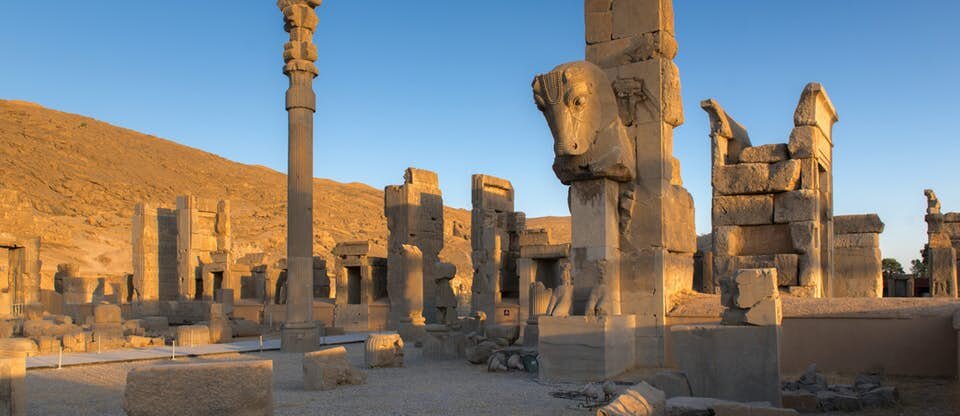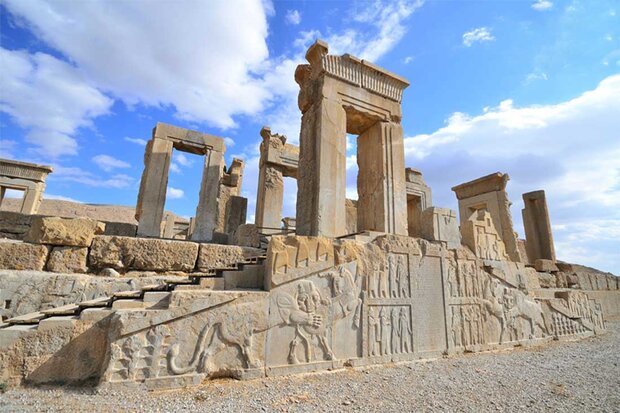Persepolis stone fragments being documented, preserved for future generations

TEHRAN – The second phase of a massive documentation project has commenced in the UNESCO-registered Persepolis to collect, classify, restore and preserve stone fragments scattered across the once ceremonial capital of Achaemenid kings for future generations.
“These stone fragments, which are scattered in the open air, have been detached over time from gates, columns, and other stone monuments inside Persepolis,” the World Heritage director, Hamid Fadaei, said on Saturday.
The official said the number of those fragments is very high, adding “Because the fragments are situated directly on the surface, coldness, rain and plant growth cause a lot of damage to them.”
“Therefore, we decided to collect, document, and classify each piece of stone and then transfer them to covered reservoirs inside Persepolis.”
The first phase of this project started in early 2019… and about 3600 pieces of stones have been recorded and documented and transferred to the warehouse spaces so far, he explained.
Furthermore, the project is a great help for the restoration of the main structures of the World Heritage site. “By transferring the pieces of stone separated from the buildings and palaces into warehouses, it is possible to document, classify and organize the pieces of stone and thus create a database to install the pieces to their original places.
The royal city of Persepolis ranks among the archaeological sites which have no equivalent. The royal city of Persepolis ranks among the archaeological sites which have no equivalent, considering its unique architecture, urban planning, construction technology, and art. Persepolis, also known as Takht-e Jamshid, whose magnificent ruins rest at the foot of Kuh-e Rahmat (Mountain of Mercy) is situated 60 kilometers northeast of the city of Shiraz in Fars province.
Archeologist Yousef Zare’, who is in charge of the project said: “In the process of organizing the stone pieces, their location and presence will be determined before moving. These descriptions along with specifications such as dimensions and size, the weight of the piece of stone, descriptions of the role, etc. are completed in the relevant tables and images of different aspects of the stone are added to each identity card.”
Another expert, Fahimeh Homayoun explained, “Normally on each piece of stone is surveyed to determine its original including the base of a column, column head, stairs, and other possible components.”
This 13-ha ensemble of majestic approaches, monumental stairways, throne rooms (Apadana), reception rooms, and dependencies is classified among the world’s greatest archaeological sites.
The city’s immense terrace was begun about 518 BC by Darius the Great, the Achaemenid Empire’s king. On this terrace, successive kings erected a series of architecturally stunning palatial buildings, among them the massive Apadana palace and the Throne Hall (“Hundred-Column Hall”).
The site is marked by a large terrace with its east side abutting the Kuh-e Rahmat (“Mount of Mercy”). The other three sides are formed by a retaining wall, varying in height with the slope of the ground from 13 to 41 feet (4 to 12 meters); on the west side, a magnificent double stair in two flights of 111 short stone steps leads to the top. On the terrace are the ruins of several colossal buildings, all constructed of a dark gray stone (often polished to a marble-like surface) from the adjacent mountain.

According to Britannica, the stone was cut with the utmost precision into blocks of great size, which were laid without mortar; many of them are still in place. Especially striking are the huge columns, 13 of which still stand in the audience hall of Darius I (the Great; reigned 522–486 BC), known as the Apadana, the name given to a similar hall built by Darius at Susa. There are two more columns still standing in the entrance hall of the Gate of Xerxes, and a third has been assembled there from its broken pieces.
In 1933 two sets of gold and silver plates recording in the three forms of cuneiform—ancient Persian, Elamite, and Babylonian—the boundaries of the Persian empire were discovered in the foundations of Darius’s hall of audience. Several inscriptions, cut in stone, of Darius I, Xerxes I, and Artaxerxes III indicate to which monarch the various buildings were attributed.
Persepolis was the seat of the government of the Achaemenid Empire, though it was designed primarily to be a showplace and spectacular center for the receptions and festivals of the kings and their empire. It was burnt by Alexander the Great in 330 BC apparently as revenge to the Persians because it seems the Persian King Xerxes had burnt the Greek City of Athens around 150 years earlier.
AFM
